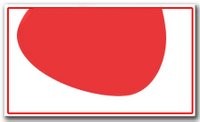 Ten years ago –in June of 1991– I began my career in audio production at Elias Associates. I started as an intern. Two school chums, Jim Nichols and Josh Kirsch –both Elias alum, but then working for JSM– had advised me to apply for an entry-level job at Elias Associates, which in those days was known to be as dog-eat-dog as it gets. If one survived the competitive culture and Investment Banker/Medical Resident hours, one was supposed to emerge a world-class audio talent.
Ten years ago –in June of 1991– I began my career in audio production at Elias Associates. I started as an intern. Two school chums, Jim Nichols and Josh Kirsch –both Elias alum, but then working for JSM– had advised me to apply for an entry-level job at Elias Associates, which in those days was known to be as dog-eat-dog as it gets. If one survived the competitive culture and Investment Banker/Medical Resident hours, one was supposed to emerge a world-class audio talent. The only other facilities I knew of that shared a similarly rigorous reputation were The Hit Factory and The Power Station (now Avatar) Naturally, I took their advice with great enthusiasm, but it still took six months pestering the receptionist to get an appointment, and a month after that to get hired.
I arrived with high recommendations from Joel Chadabe, with whom I had studied Computer Music Programming with Jim and Josh. Joel had also been a mentor to Jonathan Elias.
In fact, it was through Joel that I first heard of Jonathan, and then another prior student of his –and Elias composer– Sherman Foote.
Sherman had a real impish sense of humor about him. When I was an assistant he'd at times advocate my contributions to the Production Department or to the Creative Director, a gesture that I really welcomed and appreciated. But as an intern undergoing the usual hazing, I could never tell if he was angry at me, sometimes, or just pulling my leg. He would usually just start to laugh and let you in on the joke –right before you were about to cry.
Of course I wanted to impress him, anyway possible.
Early on, before I really knew what I was doing, I remember ‘normaling’ a console –essentially returning all the knobs and buttons on a mixing board to their zero position. Not including buttons, there are over a thousand knobs on a professional console. I left one knob at the 8’o’clock position instead of where it normally zeroed out at 7 o’clock. Sherman –with almost superhuman ability– walked in the room and immediately pointed at the one button I had missed. He quietly but sternly warned me never to leave the console in such an unusable condition again.
That’s how ‘buttoned’ up you had to be: You wanted to work with the best? Not one button in a thousand could be left out of place, not even by a degree. Good morning and where’s my coffee?
My initial duties were split between serving the needs of the Scott and Jonathan Elias; the Creative Director, Alexander Lasarenko; and the Head of Production, Ray Foote.
Additionally, I often worked with Audrey Arbeeny on ‘special projects’.
Audrey had been the first member of the organization to recommend me to the others. We sat in the conference room, her back to a wall of sunlit CLIO’s, which cast a regal glow around her. I was suitably impressed.
I showed up my first day at work wearing khaki’s, a tie and a white button down oxford shirt. I thought a professional look was required of me. Management was outfitted in solid black Japanese couture clothing or rock star ripped jeans and cowboy boots.
The first thing Jonathan Elias did when he met me was to bend over and rip a hole in my pants, from my thigh to just above my knee –while I was still wearing them! At first, I thought:
‘My God, I’ve gone to work for freaks.’
Strangely enough, though, I soon felt like I was fast becoming one of them. Whether or not the genetic mutation occurred before or after my arrival, I’ll never know, but before long my entire wardrobe was a hipster’s shade of East Village Black, and my ears –while honed before– were getting increasingly sensitive to the subtlest of background noise, hiss and awkwardly placed pitches.
No comments:
Post a Comment